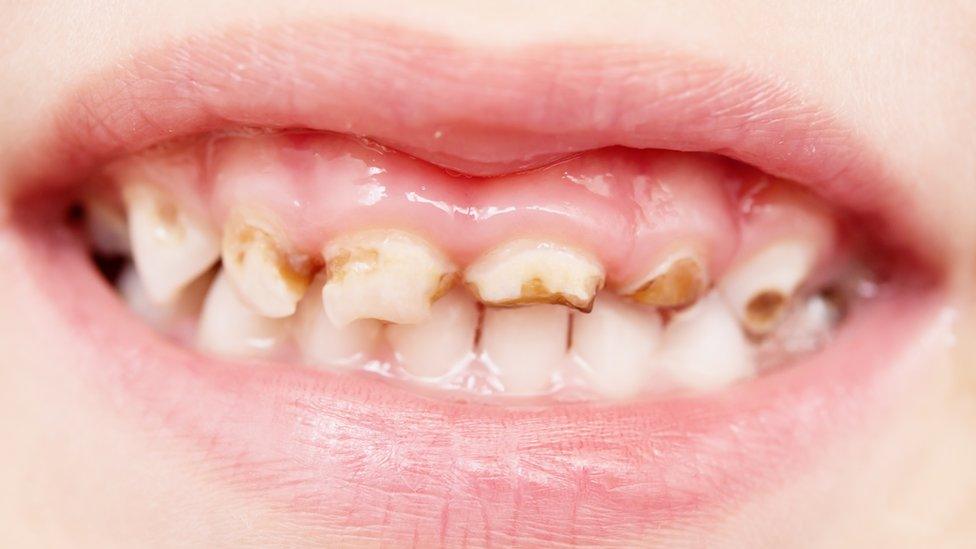Under fives tooth decay 'improving'
- Published

The number of five-year-olds with tooth decay has dropped to its lowest level in almost a decade, latest figures from Public Health England show.
In 2008, nearly a third of five-year-olds in England - 177,423 in all - suffered tooth decay. By 2015, it had dropped to a quarter.
But health experts say more steps must be taken to help youngsters look after their teeth.
They recommend limiting sugary food and drink and regular trips to the dentist.
And children should brush their teeth twice a day with fluoride toothpaste.
What's changed?
Currently, an estimated 166,467 five-year-olds - less than a quarter - suffer from tooth decay.
But while there has been improvement nationally, experts say there is a great deal of regional variation.
The highest rates of tooth decay were found among children living in the North West of England, and the lowest in the South East.
Dr Sandra White, director of dental public health at Public Health England, said having healthy teeth was important for children, both for their health and their confidence.
"Our faces are quite a mirror to us, and we you smile with a nice smile it makes a big difference when we start school."

How to brush your teeth properly
She said the downward trend in tooth decay was welcome, and was probably down to parents and society being more aware of the impact of sugar on teeth.
"Parents have a key role in this. They need to watch what their children are eating and particularly drinking."
She said children were consuming three times the amount of sugar that they should be having, and a lot of that is coming from sugary drinks.
"It would be wonderful if everybody gave their children water and low fat milks." But she accepted that, realistically, it might be quite difficult for parents to achieve.
Follow Michelle on Twitter, external
- Published15 April 2016

- Published15 April 2016